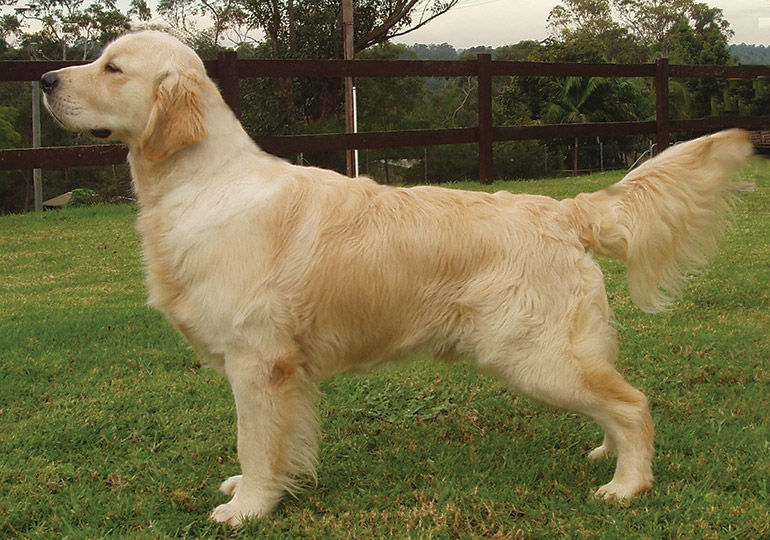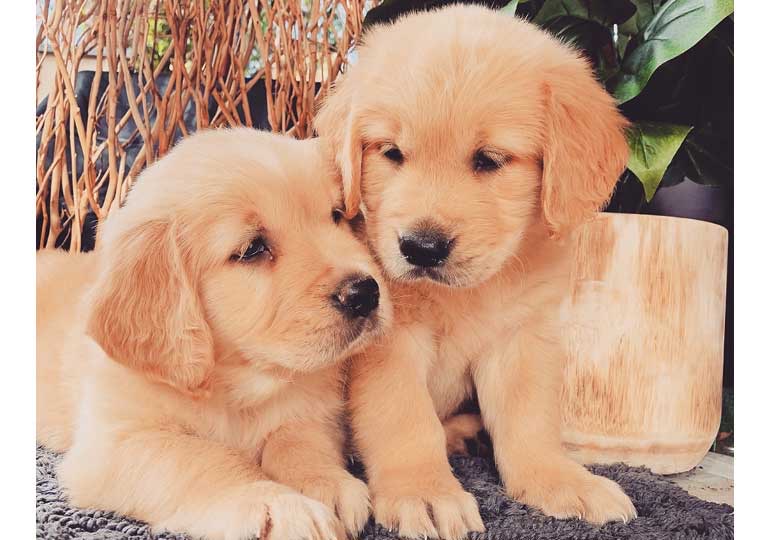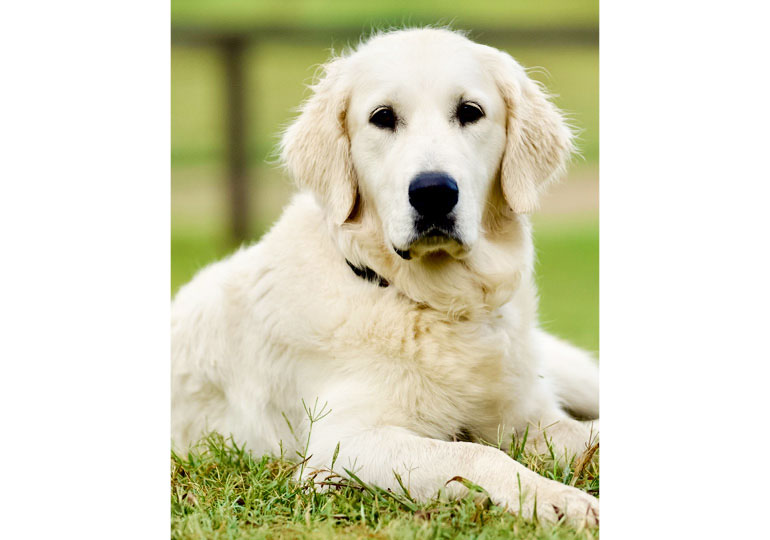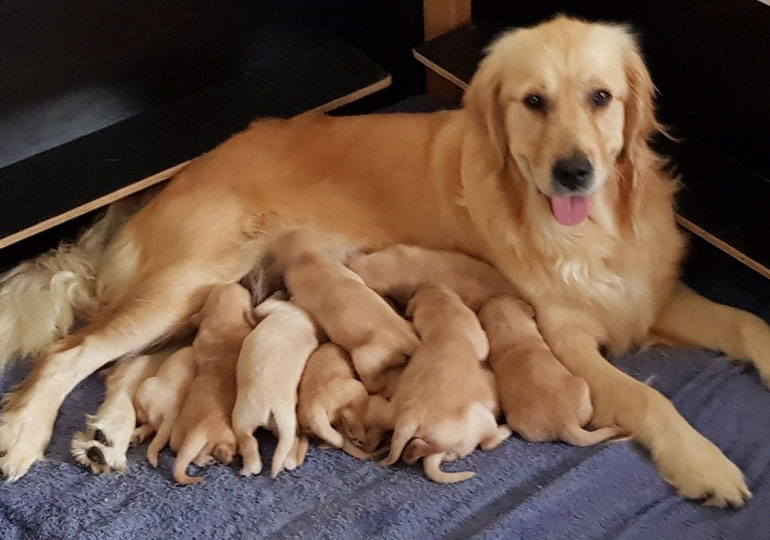Breeds
Golden Retriever

GROUP 3 - GUNDOGS
History
The Golden Retriever was developed in 19th century Scotland to be a strong and swift hunting dog, retrieving wild birds on land and water, even in extreme wet and cold conditions.
Today, the breed excels in sports, such as Agility, Obedience and field trials and is the ideal family dog with its friendly and fun-loving personality.
Appearance
The Golden Retriever is a moderate dog. He was bred in Scotland to retrieve game on land and in the water. He should appear symmetrical and balanced in every way. Known for a kindly expression and biddable temperament, the Golden makes an ideal family companion.
The Golden is a strong powerful dog, but should never appear exaggerated in any way, and no part of his profile should stand out as being out of proportion. Measured from his chest to butt of tail, he is slightly longer than height at shoulder and withers to elbow equals elbow to ground. The chest should be neither too wide or too narrow with straight forelegs, strong pasterns and catlike feet.
The head of the Golden Retriever is a breed feature. His dark brown eyes and melting soft look is difficult to resist and portrays his gentle happy disposition. The head is balanced in every way, neither too broad nor too narrow, with a deep powerful muzzle enabling him to carry out his task of retrieving. A strong underjaw is also required. His neck flows into a level topline, never sloping, with his tail continuing the line and carried level with his topline.
The coat is another distinctive feature. Being a swimmer, it should be weather-resistant, of medium texture with undercoat and can be flat or wavy. Colour can be any shade of cream or gold, but neither red or mahogany. The colour deepens with age and is said to eventually reach the colour of a puppy’s ears by maturity.
Movement is smooth and effortless with good reach and drive; topline remains level without roll in the mature dog, with the tail carried level with the back, gently waving. Any sign of aggression or lack of confidence is highly undesirable.
Temperament
The Golden Retriever is kind, gentle and confident, as well as affectionate with people and other pets. It is a devoted and loyal breed with a beautiful temperament and an aim to please. It wants to be around its family all the time and will not be happy if left outside for long periods.
The Golden Retriever is intelligent and responds well to training. The breed thrives on structured training programs and is a top performer in Obedience and Agility trials. Because of its friendly nature towards strangers, as well as friends, it is not suitable as a watchdog.
Maintenance
Golden Retrievers are a low maintenance breed.
A puppy free from hereditary disease, apart from unforeseen accidents, will grow into a hardy dog.
The Golden Retriever has a flat or wavy coat with a dense, water-resisting undercoat. It sheds throughout the year, with two heavy moulting stages during that time. Daily brushing can help reduce the amount it will shed and prevent matting, which can lead to skin irritations.
Suitability
The Golden Retriever is adaptable and can easily fit into any situation due to its kind nature. The breed is happiest when it is accepted as a valuable member of the family.
The active Golden Retriever needs regular exercise, such as a daily walk and, if possible, a run. The breed also loves swimming. If it does not receive regular mental and physical stimulation, particularly as a puppy, it can become destructive.
The Golden Retriever makes a wonderful companion for the elderly, people with disabilities and families with children. However, like with any dog, supervision is important when around children.
Health
It’s important to regularly check the breed for hotspots, as it is prone to getting them from painful and irritating fleabites or allergies. Like all dogs, the Golden Retriever requires regular tick, flea, intestinal worms and heartworm treatments. Consult your veterinarian on treatment options. Desexing and vaccination against diseases, such as the deadly parvo virus and highly infectious kennel cough, are also important to discuss with your vet.
Common hereditary problems include hip dysplasia, progressive retinal atrophy (PRA), elbow dysplasia, hereditary cataracts and sub aortic stenosis.
Words: Sandra Patterson & Jacquie Dixon
In Conclusion
Now you know a little about the Golden Retriever, you may think that this is the dog for you. Before you make a decision, please make contact with the breed club or your State controlling body for purebred dogs. They will be able to give you information about available puppies and also suggest dog shows where you can see the breed and speak to breeders. In this way you will gain a better perspective of the Golden Retriever and its needs, and whether this breed would suit your lifestyle.
Breeders



















